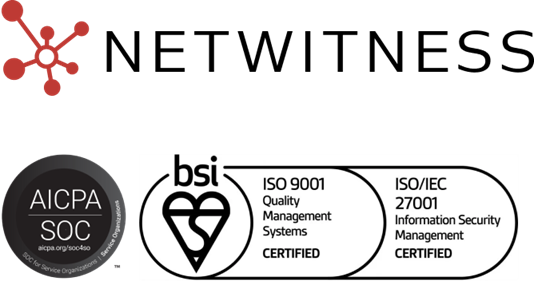What is Keystroke Logging?
Keystroke logging is the practice of monitoring, recording, and analyzing keyboard inputs to capture typed information including passwords, personal data, and sensitive communications. In cybersecurity contexts, keylogging represents a significant threat where malicious actors use keystroke logging software and hardware devices to steal credentials and compromise systems. Understanding keystroke logging techniques and prevention methods is essential for maintaining digital security and protecting against unauthorized data collection.
Keystroke logging involves the systematic capture and recording of keyboard inputs through software applications or hardware devices. A keylogger operates by positioning itself between the keyboard and the operating system, intercepting and storing every keystroke before the information appears on screen. This captured keystroke log contains valuable data that attackers can analyze to extract usernames, passwords, credit card numbers, and other sensitive information.
Modern keystroke logging software can operate covertly in the background, making detection difficult for average users. These key stroke tracker applications transmit collected data to remote command-and-control servers, enabling cybercriminals to access stolen information from anywhere in the world.
Synonyms
- Keystroke logger
- Keystroke recorder
- Keylogger
- Keylogging
Why Keystroke Logging Protection Matters
Failing to protect against keystroke logging can lead to identity theft, financial fraud, corporate espionage, and complete system compromise. Key reasons keystroke logging protection is critical include:
- Credential Protection: Preventing theft of passwords, banking information, and authentication data that keyloggers specifically target.
- Privacy Preservation: Maintaining confidentiality of personal communications, business documents, and sensitive conversations.
- Compliance Requirements: Meeting regulatory standards for data protection and preventing unauthorized monitoring of user activities.
- System Integrity: Protecting against malware that uses keylogging as an entry point for broader system compromise and lateral movement.
Effectively defending against keystroke logging ensures organizations and individuals can operate securely without exposing sensitive information to unauthorized surveillance.
How Keystroke Logging Works
Keylogging attacks typically follow a structured infiltration and data collection process:
- Installation Phase: Keystroke logging software gets installed through phishing emails, malicious websites, infected applications, or physical hardware device placement on target systems.
- Interception Process: The keylogger positions itself within the keyboard-to-screen data path, capturing keystrokes before they reach their intended applications or display.
- Data Collection: Every keystroke gets recorded into a keystroke log file, often including timestamps, application context, and typed content for later analysis.
- Information Transmission: Collected data is automatically transmitted to attackers through remote servers, email, or stored locally for physical retrieval.
- Analysis and Exploitation: Cybercriminals analyze keystroke logs to identify valuable information like passwords, which they use for unauthorized system access.
Types of Keystroke Logging Threats
- Software Keyloggers: Malicious applications installed through infected downloads, phishing attacks, or Trojan horses that monitor all keyboard activity and transmit data remotely.
- Hardware Keyloggers: Physical devices connected between keyboards and computers that record keystrokes locally, requiring physical access for both installation and data retrieval.
- Browser-Based Key Stroke Trackers: Malicious browser extensions or scripts that capture form inputs and login credentials entered on websites.
- Mobile Keystroke Logging Software: Applications targeting smartphones and tablets that record virtual keyboard inputs, screenshots, and touch patterns.
Best Practices for Keystroke Logging Protection
- Deploy Comprehensive Antivirus Solutions: Use advanced security software that specifically detects and blocks keystroke logging software and related malware threats.
- Monitor System Processes: Regularly check task managers and system processes to identify suspicious applications that might indicate keylogger presence.
- Use Virtual Keyboards: Deploy on-screen keyboards for sensitive data entry, as these bypass physical keystroke capture mechanisms used by most keyloggers.
- Implement Multi-Factor Authentication: Add additional security layers that remain effective even if keystroke logs compromise primary passwords.
- Regular Hardware Inspections: Physically examine computer connections and ports to detect unauthorized hardware keylogger installations.
Related Terms & Synonyms
- Keylogging: The fundamental process of capturing and recording keyboard inputs for analysis and potential misuse.
- Keylogger: Software or hardware designed to monitor and record keystroke data without user knowledge or consent.
- Keystroke Log: The recorded data file containing captured keyboard inputs, timestamps, and associated application information.
- Key Stroke Tracker: Surveillance tools that monitor typing patterns and capture sensitive information entered through keyboards.
People Also Ask
1. How to prevent keystroke logging?
Prevent keystroke logging by using reputable antivirus software, avoiding suspicious downloads and links, enabling multi-factor authentication, using virtual keyboards for sensitive data entry, and regularly monitoring system processes for unauthorized applications.
2. How to detect keystroke logging software?
Detect keystroke logging software by checking task manager for unknown processes, monitoring unusual network activity, examining browser extensions, reviewing startup programs, and watching for system performance issues like typing delays or application freezes.




